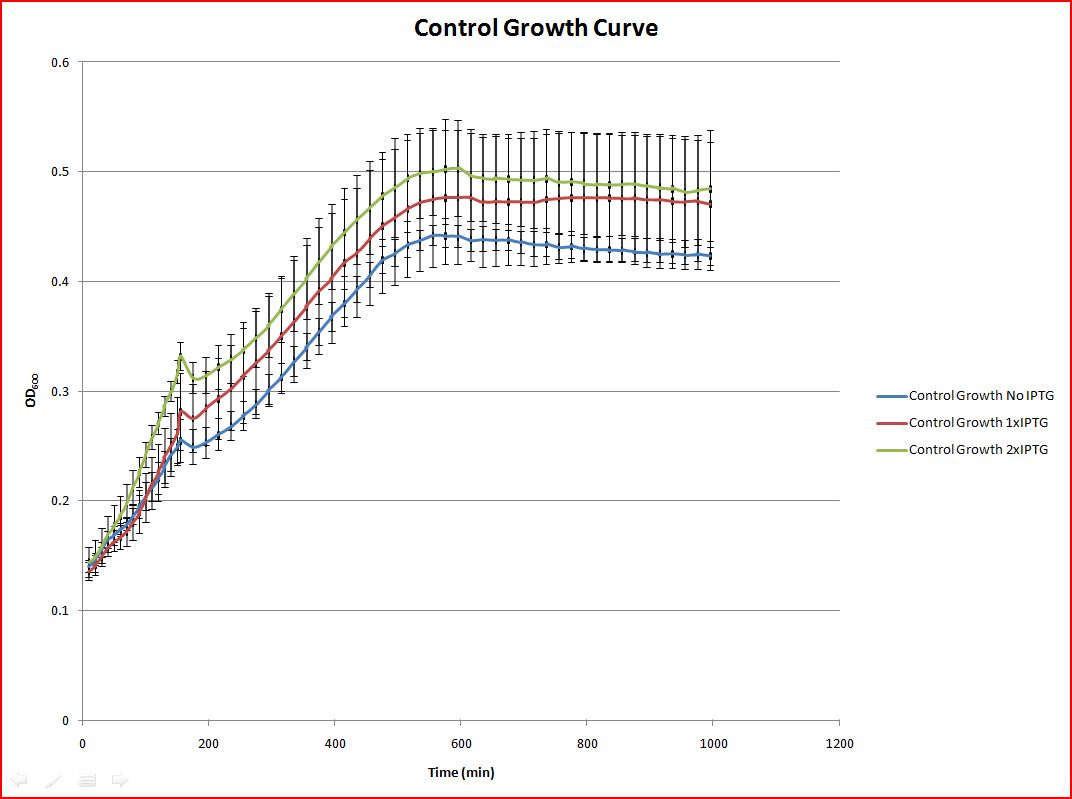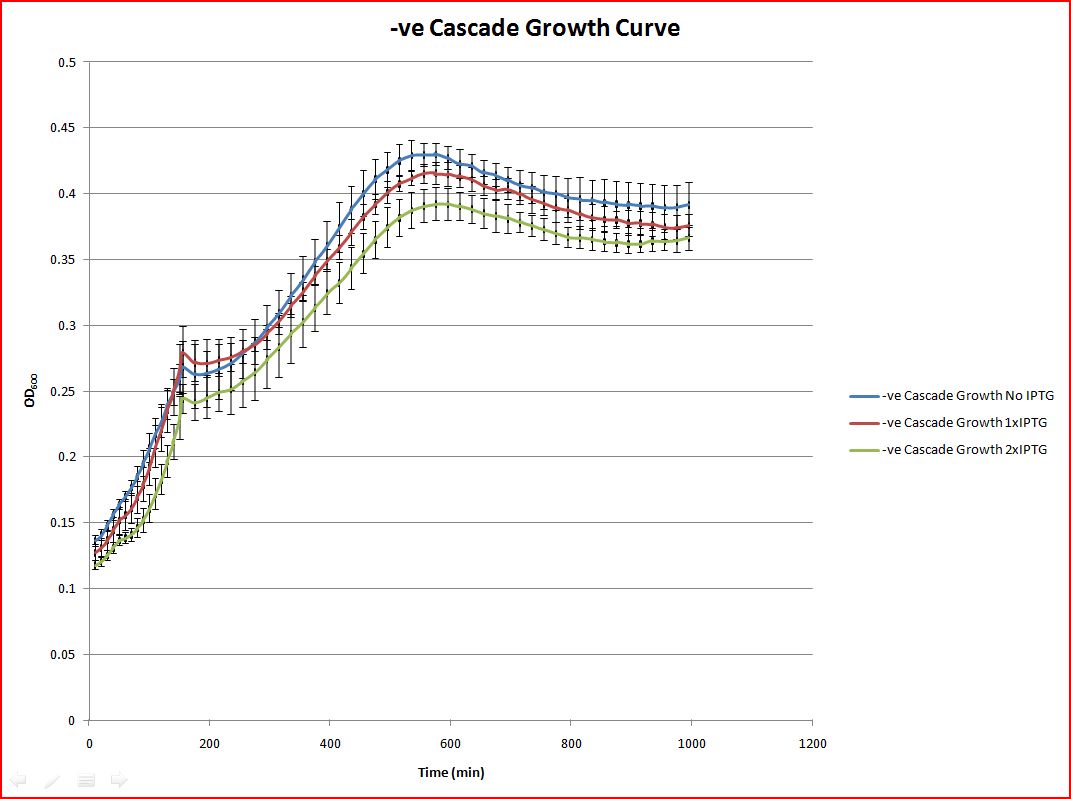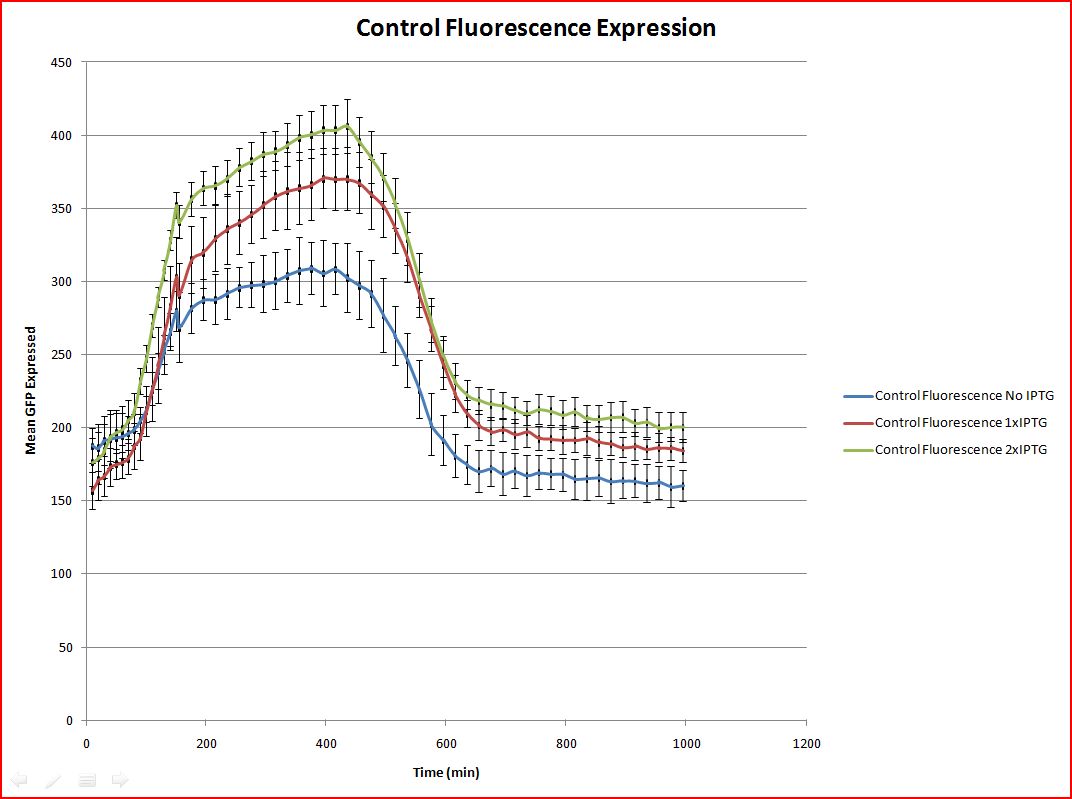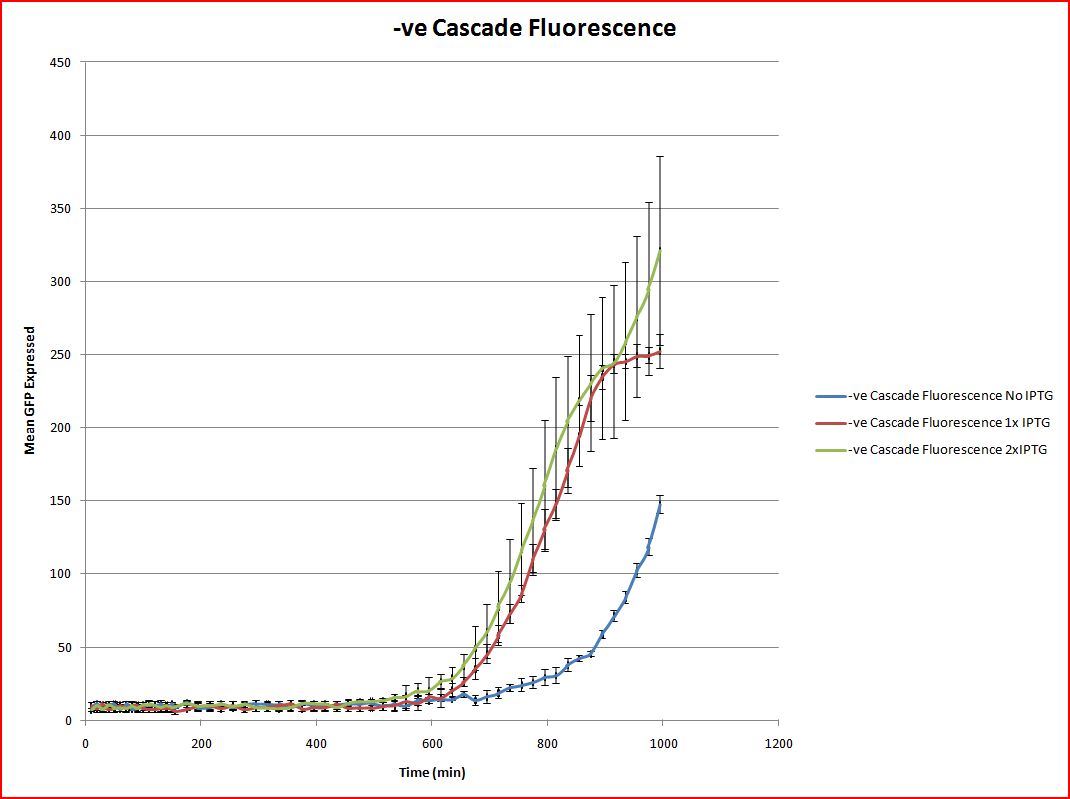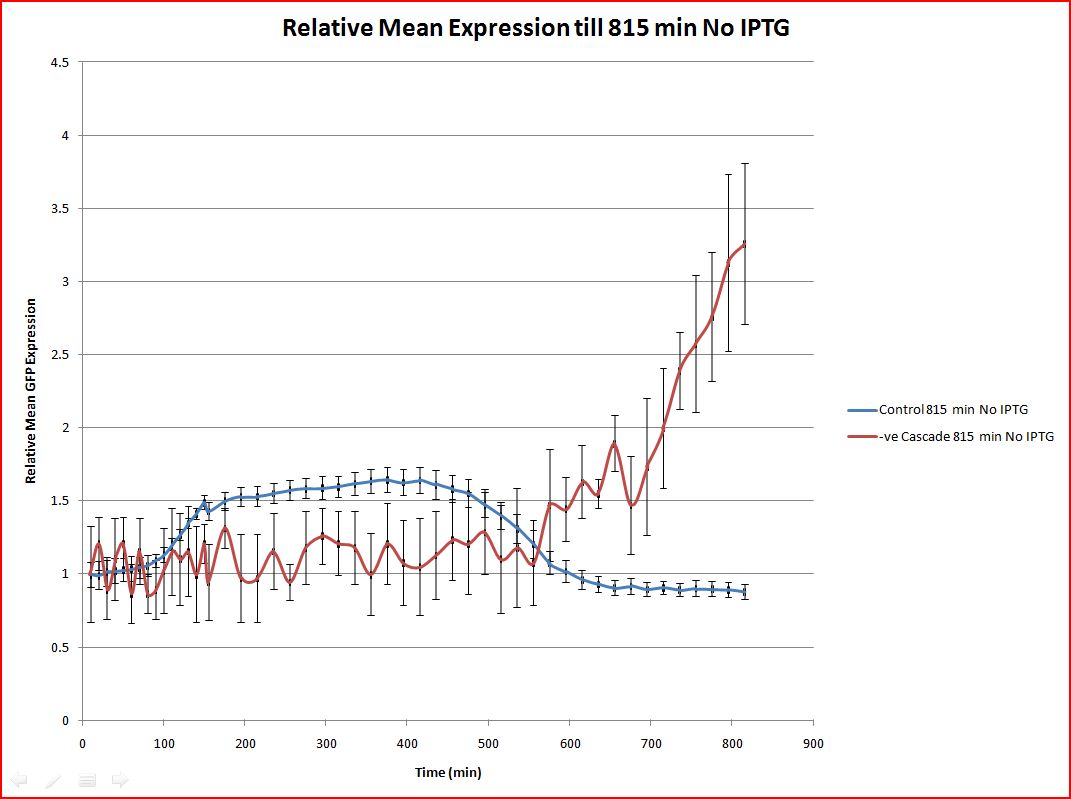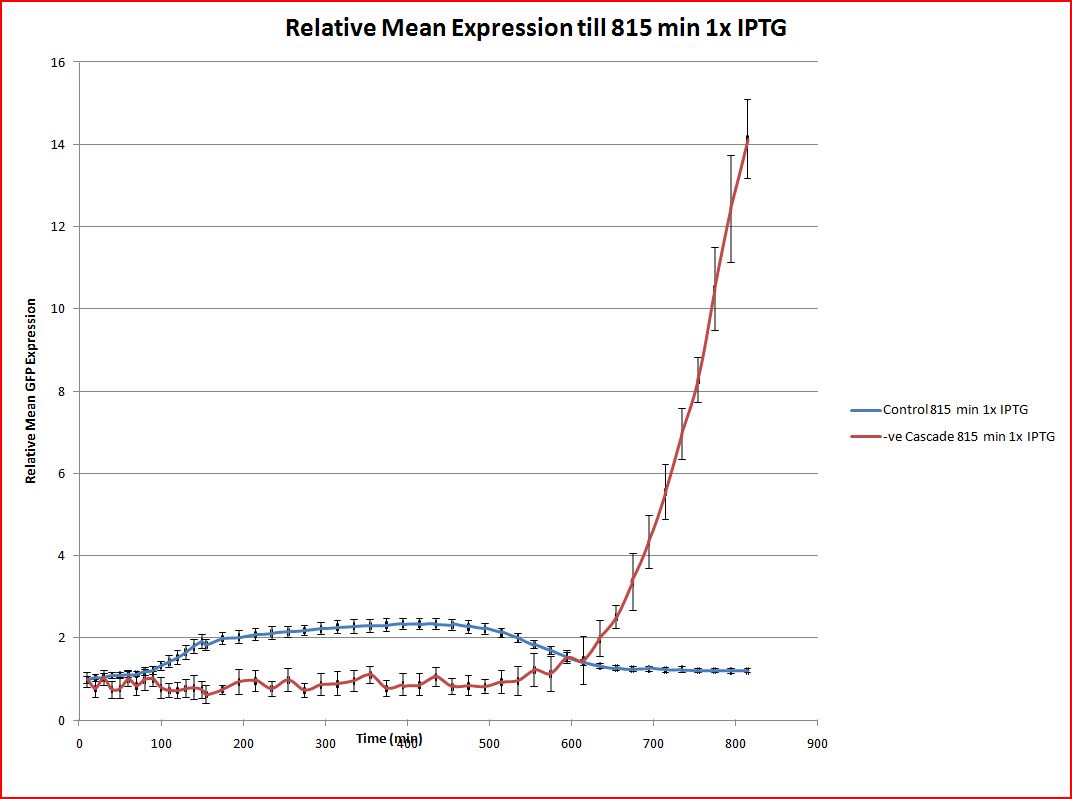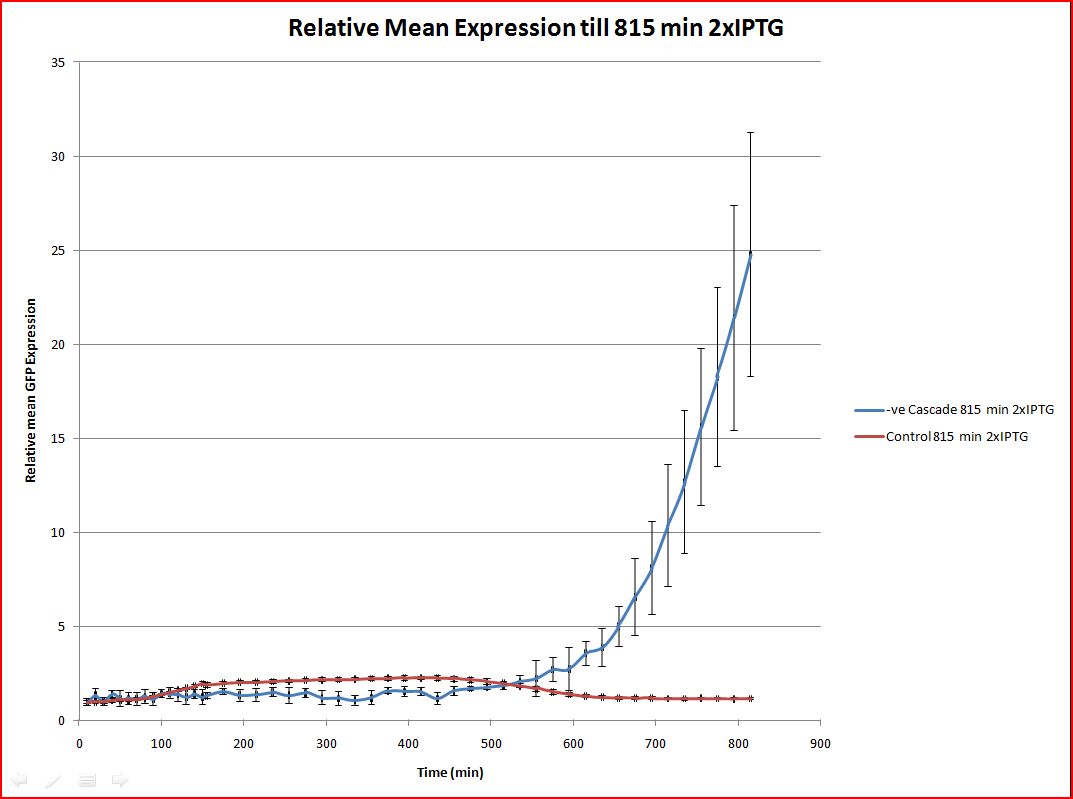Team:TUDelft/Delay Results Continue
From 2009.igem.org
Fluorescence Experiments
At first we guessed from the modelling that our delay device would start delay in less than 2 hours. Hence the fluorescent reading after IPTG induction (0.1mM and 0.2mM)(see protocol) in the 96 well plates were taken only for 2 and half hours and the readings were not giving promising results. Hence with the help our supervisors to find which part of the growth curve are we in, we ran an overnight experiment with continuing the same experiment for 14 hours more, hence in total we would get a result for 16 and half hours.
The results for the positive control and negative cascade (experiment) are given in this xls attached []. The results were consolidated and shown in graphs below.
Why did not the cascade work?, Even though similar transcriptional cascade worked before [4], our design did not. Some potential explanations could fill some gaps in this work: 1) the presence of both plasmids in one cell was not confirmed, 2) although the modelling did not showed, the degradation/production rates of the transcriptional factors could have an important contribution in this specific configuration and 3) the individual function of each plasmid was confirmed, however, other interactions not taken into account, such as robustness of the cells, might provoked the non functional performance of the plasmid 2.
 "
"
